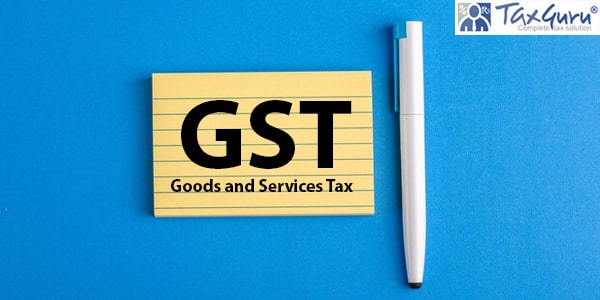Central Board of Direct Taxes (CBDT) has recently issued revised version of instructions covering all aspects of procedure to be followed by Departmental authorities for conduct of revenue audit and also for dealing with audit objections including remedial actions to be taken.
Central Board of Direct Taxes (CBDT) has recently issued Instruction (Income Tax) No. 9/2006, dated 7th November, 2006 (157 Taxman St.23/16 CAPJ St. 739) covering all aspects of procedure to be followed for conduct of revenue audit and also for dealing with audit objections including remedial actions to be taken by the departmental authorities. The present instruction is said to be issued in suppression of earlier instructions nos. 159, 484, 499, 612, 828, 854, 1046, 1057, 1071, 1176, 1205, 1473, 1598, 1609, 1928 & 1971.
Procedure outlined – As per the broad outline of procedure, at the very first stage of notice of any irregularity, the audit party issues an audit memo for which AO furnishes his reply. Issues unsettled get converted into local audit report (LAR) from Dy. Accountant General (DAG) to the AO. The AO is supposed to submit his report (reply) to the CIT through Addl. CIT within 30 days of receipt of LAR. Joint/Addl. CIT is also supposed to submit his report to CIT on such LAR. The CIT is supposed to take decision on audit objection and send an appropriate reply to the AG/DAG within a fortnight.
The issues unsettled after this round get converted into statement of fact (SOF) which are again communicated by AG to the CIT. The CIT is supposed to send appropriate reply of the SOF to the AG within a fortnight. If the AG is not satisfied with the reply and is not prepared to drop the audit objection, the same is converted into a ‘draft para’.
On receipt of draft para, the CIT is supposed to submit his report to the Board, so that the Board could examine it and submit a suitable reply to Comptroller and Auditor General of India (C&AG).
Aspects prejudicial to assessee: As can be seen from the above procedure, an audit objection from its initiation till its conversion into draft para
| takes more than six months. At every stage of process, there is a possibility that such audit objection is dropped.
Though the AO/CIT may be in correspondence with the audit on acceptability or otherwise of the audit objection, the Board |
An audit objection from its initiation till its conversion into draft para takes more than six months. |
instructions require them to initiate remedial action in terms of starting proceedings under section 154 or 147 or 263. Paras 4 & 5 of the present instructions are reproduced below to have a better understanding of the issue :
“4. Remedial action – (i) An Audit objection should be accepted and remedial action should be taken in a case where the audit objection relating to an error of facts or an issue of law is found to be correct.
(ii) Even if objection is not accepted by the CIT, remedial action should be initiated, as a precautionary measure, in respect of such audit objections, save as provided in para (v) below.
(iii) Appropriate remedial action should invariably be initiated within two month of the receipt of the Local Audit Report, and necessary orders should be passed within six
months thereafter.
(iv) Remedial action should invariably be initiated in respect of the following circumstances, –
(a) where an assessment under section 143(1) was made and the objection pointed out by Audit could not have been considered under the provisions of section 143(1);
(b) where the interpretation of fact or law by the audit is in conflict with any decision of a High Court (not being the jurisdictional high Court) which is squarely applicable to the facts of the case, or
(c) where there are conflicting decisions of different High Courts (not being the jurisdictional High Court), or
(d) where the matter involves interpretation of statute and there is no decision of any High Court on the matter.
However, in cases falling under (b), (c) & (d) above, the remedial action initiated can be dropped only with the prior approval of the Board. For this purpose, the CIT should immediately send a reference to the Board for decision, not later than three months from receipt of LAR by the CIT concerned, stating cogently therein the detailed reasons for consideration of the proposal for dropping of the remedial action initiated.
(v) Remedial action need not be initiated in a case where, –
(a) the CIT is of the view that the interpretation of fact or law by the audit is in conflict with a decision of the Supreme Court and the decision squarely applies to the facts of the case, or
(b) the CIT is of the view that the interpretation of fact or law by the audit is in conflict with a decision of the jurisdictional High Court, which is squarely applicable to the facts of the case and the operation of which has not been stayed by the Supreme Court, or
(c) the CIT is of the view that the Assessing Officer has acted in conformity with Board’s Instruction/ Circular, or
(d) the audit objection raised is on facts, and the CIT, after necessary verification, is of the opinion that the audit objection is factually incorrect.
However, considering that C.Cs/Ds.G I.T. are the competent authority for accepting or contesting adverse judgements of High Courts, in respect of (a) and (b) above prior approval of the C.Cs/Ds.G. I.T. concerned should be obtained for taking a decision for not initiating remedial action, and in respect of (c) above the matter should be referred to the relevant Division of the board for examination and decision.
The CsIT should ensure that necessary reply/reference is sent to the AG (Audit) concerned/the Board within a month of the receipt of the Local Audit Report.
5. Second Appeal in Cases involving Revenue Audit Objection – (i) Where a Revenue Audit objection has been accepted by the CIT or by the Ministry and an assessment has been framed in pursuance thereof, and the first appellate authority passes an order taking a view contrary to that of Audit, the adverse appellate order should be carefully scrutinised and appeal should be preferred if the order is not justified either in law or on facts;
(ii) Where a Revenue Audit objection has not been accepted by the CIT or by the Ministry but an assessment has been framed in pursuance of the audit objection, an adverse appellate order by the first Appellate authority should be dealt with in the same manner as in the case of an objection accepted by the CIT and/or the Ministry till the AG/C&AG agrees with the views of the Department/Ministry ;
(iii) However, if it is proposed not t
o file second appeal, the CIT should record reasons as to why an appeal is not considered necessary despite the audit objection.”
As can be seen above, para 4 (ii) of the instructions, stipulate that even if objection is not accepted by CIT, remedial action should be initiated, as a precautionary measure, in respect of such audit objections, save as provided in para (v). . . . As per para 4(iii), such remedial action is to be initiated within 2 months of the receipt of the LAR, and necessary orders are to be passed within 6 months thereafter. The instructions require remedial action to be taken even in cases where assessment was completed under section 143(1).
Para 5 of the instructions mandates for filing of second appeal before ITAT even if the audit objection was not accepted by the CIT/Ministry but
| ‘an assessment has been framed in pursuance of the audit objections’ which is quashed by the first appellate authority – CIT(A). Line of judicial thinking – Such instructions of the Board so far as taking of remedial actions is concerned are ultra vires and have been held so by the courts. In Adani Exports v. DCIT [1999] 240 ITR 224 (Guj.). Board’s Instruction No. 828, dated 24.02.1975 was |
Such instructions of the Board so far as taking of remedial actions is concerned are ultra vires and have been held so by the courts. |
held ultra vires. The instructions required that remedial action invariably be initiated as a precautionary measure in respect of audit objections, even if the objection is not accepted by the Income Tax Officer, or without the Assessing Authority applying his mind to such information for reaching to his own conclusion. Once remedial action is initiated, it can be dropped with the approval of CIT, if objection raised is one of the facts and facts stated to the audit are found to be incorrect. Gujarat High Court held that such ultra vires instructions cannot be pressed into service to save the initiation of proceedings under section 147, in the absence of holding of any belief by the AO, by arrogating the power to itself by the Board by issuing such directions contrary to the provisions of the law at the pain of subjecting the officer to paid of exposing him to charge of insubordination. It was further held that the belief of AO that income had escaped assessment is open to judicial review.
Similar issue again came before Gujarat High court in Rajesh Javeri Stock Brokers Pvt. Ltd. v. ACIT [2006] 284 ITR 593 where though the AO was in correspondence with the audit and was objecting to the audit objections, yet he initiated reassessment proceedings by way of issue of notice under section 148 after recording satisfaction and reasons. The court called for the department’s records, which established such state of affairs. Gujarat High Court referred to its earlier decision in Adani Exports case (Supra) and quashed notice under section 148.
Instruction No. 1928, dated 07-08-1995 of CBDT became subject of judicial review in IMC Ltd. v. JCIT in [2003] 261 ITR 731 (Cal.) where Hon’ble court expressed its reservation as to legality of the instructions. However, as this issue was not urged by the petitioner, court did not decide its legality or otherwise. In this case also, the instruction required that ‘remedial action should invariably be initiated as a precautionary measure in respect of all audit objections, even if the objection is not accepted by the Commissioner of Income Tax’.
In Indian & Eastern Newspaper Society v. CIT [1979] 119 ITR 996/2 Taxman 197, the Supreme Court held that ‘the opinion of an internal audit party of the income-tax department on a point of law cannot be regarded as ‘information’ within the meaning of section 147(b)’ prompting initiation of reassessment proceedings. Allahabad High Court in Nagrath Chemicals Works Pvt. Ltd. v. CIT [2004] 265 ITR 401/137 Taxman 382 had occasion to deal with the above judgement of the Apex Court and held that ‘the decision of the Supreme Court in Indian and Eastern Newspaper Society’s case (supra) only states that opinion on point of law of the audit party cannot be information within the meaning of section 147(b). However if the audit points out certain facts which were not in the knowledge of ITO, when he made the original assessment, it would constitute information under section 147(b)’.
Though the concept of having ‘information in possession’ has been deleted w.e.f. 01-04-1989, yet an attempt to reassess income based on different interpretation of law is not permitted even in amended law. Even information on facts should be such which was not available at the time of assessment. The distinction between old section 147 and present section 147 was examined in-depth by a Full Bench of Delhi High Court in the case of CIT v. Kelvinator of India Ltd. [2002] 256 ITR 1. The decision of Supreme Court in Indian and Eastern Newspaper Society’s case (supra) was also discussed by the Delhi High Court and it was held that ‘initiating a proceeding for reassessment only upon a mere change of opinion’ ‘may be held to be unconstitutional’ .
Allahabad High Court in Sunil Kumar Jain v. ITO [2006] 284 ITR 626 held that the belief of AO must be held in good faith. It cannot be merely pretence.
Para 4(iv) of the present instructions require that remedial action should invariably be initiated where the assessment was completed under section 143(1) and the objection pointed out by the audit could not have been considered under the provisions of section 143(1). Such instruction is contradictory to Board’s own circular no. 176, bearing F.No.RA/1/86- 87/DIT, dated 16-08-1987 of the DIT (Audit), New Delhi, wherein the Member (R&A) is quoted as under :
“No remedial action is necessary in summary assessment cases as the revenue loss, if any, is consciously suffered by the government to utilise resources for scrutiny and investigations of larger cases. In such cases, the Commissioner of Income-tax should only inform audit that the cases are completed under the summary assessment scheme”1.
It is interesting to note that present instructions do not supersede the Circular No. 176, dated 28.08.1987. In CIT v. Smt. Brij Bala [2005] 274 ITR 33 (All.) – assessment years 1983-84 to 1985-86 – return was processed under section 143(1). However, the Commissioner of Income-tax on examination of assessment records was of the opinion that order passed under section 143(1) had been made without making any enquiry into the factum of loans and other items and, therefore, they were erroneous and prejudicial to the interests of revenue. Feeling aggrieved by order of CIT under section 263 assessee approached ITAT. The ITAT relied upon Circular No. 176, dated August 28, 1987, whereby the Board had given instructions to all Commissioners to the effect that no remedial action is necessary in summary assessment cases, as the revenue loss, if any, is consciously suffered by the Government to utilise resources for scrutiny and investigation of larger cases. In such cases the Commissioner of Income-tax should only inform that audit that the cases are completed under the summary assessment scheme. On revenues’ appeal, the High Court held that circular issued by the Board are binding upon the
| authorities and, therefore, in any view of the matter, the Commissioner was not justified in initiating proceedings under section 263 of the Act.
Way forward – It is certain that despite series of decisions forbidding initiation of remedial action without real and honest satisfaction, Departmental authorities will act as per CBDT instructions. Remedy available to assessee is to be aware about internal correspondence |
Remedy available to assessee is to be aware about internal correspondence between Department and Audit. |
between Department and Audit. Right to information Act may be explored to obtain copies of such correspondence. In Bombay Chemicals Ltd. v. Union of India [2006] 201 ELT 167 (Bombay), assessee produced xerox of order passed by Assistant Collector (Excise). That order was not served on assessee. In the Court, assessee didn’t disclose the source from where they have come to know about the said order. As authenticity of that order was challenged by Department, the Court directed the Department to produce the original record. On perusal of original record, Court found that copy produced by assessee was a true Xerox copy of the original order which was in office record. Hence, the source from which the petitioners got the copy was held to be immaterial.




















